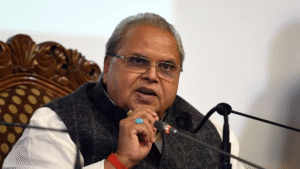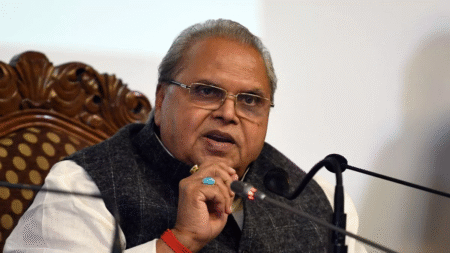As the global economy continues to evolve, emerging markets are playing an increasingly important role in driving growth and innovation. These economies, often characterized by rapid industrialization and increasing influence on the global stage, offer significant opportunities for investors, businesses, and policymakers. In 2024, several countries are poised to make substantial strides, thanks to favorable demographics, resource abundance, and strategic economic reforms.
Table of Contents
This article highlights the top 10 emerging economies to watch in 2024, examining their economic strengths, growth potential, and challenges.
Table of Top 10 Emerging Economies in 2024
| Rank | Country | GDP Growth Rate (Projected) | Key Sectors | Challenges |
|---|---|---|---|---|
| 1 | India | 6.5% | IT Services, Manufacturing | Infrastructure, Regulatory Hurdles |
| 2 | Indonesia | 5.1% | Manufacturing, Natural Resources | Environmental Sustainability |
| 3 | Brazil | 2.7% | Agriculture, Mining | Political Instability |
| 4 | Vietnam | 6.2% | Manufacturing, Export | Supply Chain Vulnerabilities |
| 5 | Nigeria | 3.0% | Oil, Agriculture | Security Issues, Corruption |
| 6 | Mexico | 2.8% | Manufacturing, Automotive | Economic Inequality, Crime |
| 7 | Egypt | 4.5% | Tourism, Energy | Inflation, Political Uncertainty |
| 8 | Philippines | 5.6% | BPO, Agriculture | Infrastructure, Natural Disasters |
| 9 | Turkey | 3.5% | Manufacturing, Tourism | Inflation, Political Challenges |
| 10 | South Africa | 1.7% | Mining, Finance | High Unemployment, Inequality |
1. India: A Technological Powerhouse
India remains one of the most exciting emerging economies, with a projected GDP growth rate of 6.5% in 2024. The country’s booming IT services sector, robust manufacturing base, and growing middle class make it a key player in the global economy.
“India’s economic growth is underpinned by its strong IT services sector and a rapidly expanding manufacturing industry.” – Raghuram Rajan, Former RBI Governor
Key Factors Driving Growth
- IT Services: India continues to be a global leader in IT and software services, with cities like Bengaluru and Hyderabad at the forefront.
- Manufacturing: The “Make in India” initiative is boosting domestic manufacturing, especially in electronics and automobiles.
Challenges
Despite its growth potential, India faces significant challenges, including infrastructure bottlenecks and regulatory hurdles. Addressing these issues is crucial for sustaining long-term growth.
2. Indonesia: Southeast Asia’s Rising Star
Indonesia is the largest economy in Southeast Asia and is expected to grow by 5.1% in 2024. The country’s abundant natural resources and growing manufacturing sector are key drivers of its economic expansion.
“Indonesia’s rich natural resources and strategic location make it a key player in the global economy.” – Joko Widodo, President of Indonesia
Key Factors Driving Growth
- Natural Resources: Indonesia is a major exporter of coal, palm oil, and minerals, which are crucial to its economy.
- Manufacturing: The country is becoming a hub for manufacturing, particularly in electronics and automotive industries.
Challenges
Indonesia faces challenges related to environmental sustainability, particularly in its palm oil industry, which has drawn international scrutiny.
3. Brazil: A Land of Rich Resources
Brazil, with a projected growth rate of 2.7% in 2024, remains a key player in the global economy, particularly in agriculture and mining. However, political instability and economic inequality pose significant challenges.
“Brazil’s vast natural resources provide a solid foundation for economic growth, but political stability is key to unlocking its full potential.” – Paulo Guedes, Brazilian Economy Minister
Key Factors Driving Growth
- Agriculture: Brazil is a leading producer of soybeans, coffee, and sugarcane, with agriculture being a cornerstone of its economy.
- Mining: The country is rich in minerals like iron ore, which are essential for global industries.
Challenges
Brazil’s economic progress is hindered by political instability, corruption, and economic inequality, which need to be addressed to ensure sustainable growth.
4. Vietnam: A Manufacturing Powerhouse
Vietnam is expected to continue its rapid growth with a projected GDP increase of 6.2% in 2024. The country’s manufacturing sector, particularly in electronics and textiles, is driving its economic expansion.
“Vietnam’s strategic positioning in global supply chains makes it a critical hub for manufacturing and export.” – Nguyen Xuan Phuc, President of Vietnam
Key Factors Driving Growth
- Manufacturing: Vietnam has become a major hub for manufacturing, particularly for electronics and apparel.
- Export: The country’s strong export performance, supported by trade agreements, is a major contributor to its economic growth.
Challenges
Vietnam’s heavy reliance on global supply chains makes it vulnerable to disruptions, as seen during the COVID-19 pandemic. Diversifying its economy is essential for long-term stability.
5. Nigeria: Africa’s Largest Economy
Nigeria, with a projected growth rate of 3.0% in 2024, is Africa’s largest economy, driven by its oil industry and a burgeoning agricultural sector. However, the country faces significant challenges, including security issues and corruption.
“Nigeria’s economic future lies in diversifying beyond oil and addressing its deep-rooted security challenges.” – Ngozi Okonjo-Iweala, Director-General of the WTO
Key Factors Driving Growth
- Oil: Nigeria is one of the largest oil producers in Africa, and the oil industry remains a key pillar of its economy.
- Agriculture: The agricultural sector is growing, with significant potential to boost food security and exports.
Challenges
Nigeria’s economic growth is hampered by security concerns, particularly in the northern regions, and widespread corruption. Addressing these issues is critical for unlocking the country’s full potential.
Also Read : The World’s Top 10 Countries in Economy In-Depth Analysis
6. Mexico: North America’s Industrial Giant
Mexico, with a projected GDP growth of 2.8% in 2024, remains a key player in North America, particularly in manufacturing and automotive industries. However, economic inequality and crime pose significant challenges.
“Mexico’s proximity to the U.S. market and strong manufacturing base make it a vital part of the global supply chain.” – Andres Manuel Lopez Obrador, President of Mexico

Key Factors Driving Growth
- Manufacturing: Mexico’s manufacturing sector, particularly in automotive and electronics, is a major contributor to its economy.
- Trade Agreements: Mexico benefits from trade agreements like the USMCA, which boost its export potential.
Challenges
Despite its strengths, Mexico faces challenges such as economic inequality, crime, and the need for reforms to improve the business environment.
7. Egypt: A Strategic Economic Player
Egypt is expected to grow by 4.5% in 2024, driven by its strategic location, robust tourism industry, and energy sector. However, the country faces significant challenges, including inflation and political uncertainty.
“Egypt’s strategic location as a gateway between Africa and the Middle East makes it a key player in regional trade and energy.” – Abdel Fattah el-Sisi, President of Egypt
Key Factors Driving Growth
- Tourism: Egypt’s rich cultural heritage and historical sites attract millions of tourists annually, making tourism a key sector.
- Energy: The discovery of natural gas fields in the Mediterranean has boosted Egypt’s energy sector.
Challenges
Egypt faces challenges such as high inflation, political uncertainty, and the need for economic reforms to attract foreign investment and sustain growth.
8. Philippines: A Service-Oriented Economy
The Philippines is projected to grow by 5.6% in 2024, with its economy driven by the booming BPO (Business Process Outsourcing) sector and a strong agricultural base. However, the country faces challenges related to infrastructure and natural disasters.
“The Philippines’ BPO sector is a global leader, driving economic growth and providing employment to millions.” – Ferdinand Marcos Jr., President of the Philippines
Key Factors Driving Growth
- BPO: The Philippines is a global leader in BPO, with companies outsourcing customer service and technical support operations to the country.
- Agriculture: The agricultural sector remains vital, providing employment and supporting food security.
Challenges
The Philippines faces infrastructure challenges, particularly in transportation and energy, as well as vulnerability to natural disasters like typhoons and earthquakes.
9. Turkey: A Bridge Between Continents
Turkey is expected to grow by 3.5% in 2024, with a diverse economy that includes manufacturing, tourism, and energy. However, the country faces significant challenges, including inflation and political instability.
“Turkey’s strategic location and diverse economy make it a crucial player in global trade and manufacturing.” – Recep Tayyip Erdoğan, President of Turkey
Key Factors Driving Growth
- Manufacturing: Turkey’s manufacturing sector is diverse, with strong performance in automotive, textiles, and electronics.
- Tourism: The country’s rich cultural heritage and strategic location make it a popular tourist destination.
Challenges
Turkey faces significant challenges, including high inflation, political instability, and economic volatility, which need to be addressed to sustain growth.
10. South Africa: A Resource-Rich Nation
South Africa, with a projected growth rate of 1.7% in 2024, remains a key player in Africa, particularly in mining and finance. However, high unemployment and economic inequality are significant challenges.
“South Africa’s wealth in natural resources provides a strong foundation for growth, but addressing inequality is crucial for sustainable development.” – Cyril Ramaphosa, President of South Africa
Key Factors Driving Growth
- Mining: South Africa is one of the world’s largest producers of gold, platinum, and diamonds, with mining being a key sector.
- Finance: The country’s financial services sector is well-developed, with Johannesburg being a major financial hub.
Challenges
South Africa faces challenges such as high unemployment, economic inequality, and the need for structural reforms to boost growth and social stability.
Conclusion
The top 10 emerging economies in 2024 are set to play a significant role in shaping the global economic landscape. These countries offer immense growth potential, driven by factors such as natural resources, manufacturing, and strategic economic reforms. However, they also face significant challenges, including political instability, economic inequality, and environmental sustainability.
Understanding these economies’ strengths and challenges is crucial for investors, businesses, and policymakers looking to navigate the global market in the coming years.
Source of Article : Global Economic Outlook: Q1 2024












